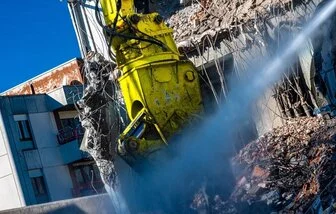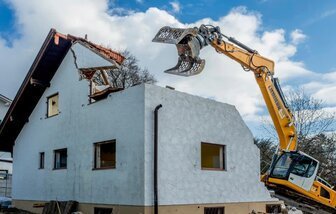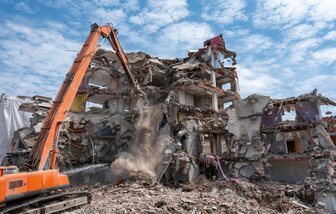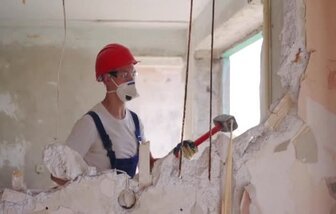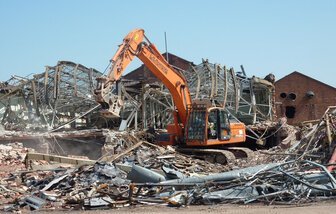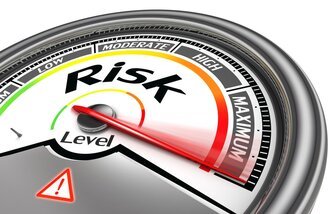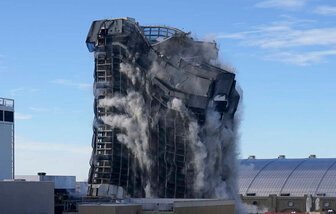What is a premature collapse?
Premature collapse of a structure is a significant concern during demolition activities, as it can lead to serious injuries and even fatalities. This unfortunate event is often caused by a lack of effective planning and failure to adhere to safety protocols. In this article, we will explore the causes of premature collapse and highlight the importance of thorough planning and risk assessment in demolition projects.
Premature Collapse overview
A building collapse is a catastrophic event that can result in significant loss of life, property damage, and economic consequences. Understanding the causes of premature building collapse is crucial for architects, engineers, and construction professionals to ensure the safety and longevity of structures.
This blog post explores the causes of premature building collapse, including design flaws, poor construction practices, material defects, natural disasters, and age.
It also provides preventive measures to avoid premature collapse, such as thorough structural design, quality construction, regular maintenance and inspections, compliance with building codes, and public awareness and education.
By implementing these measures, we can reduce the risk of building collapse and ensure the stability of our built environment.
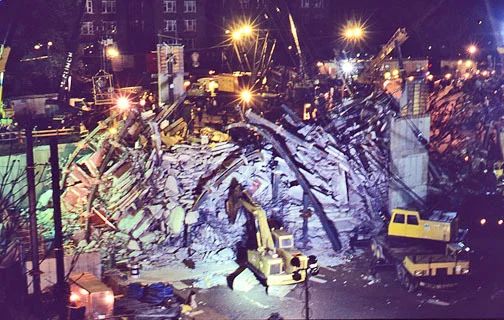
Premature collapse of a structure is a significant concern during demolition activities, as it can lead to serious injuries and even fatalities. This unfortunate event is often caused by a lack of effective planning and failure to adhere to safety protocols. In this article, we will explore the causes of premature collapse and highlight the importance of thorough planning and risk assessment in demolition projects.
The primary cause of premature collapse is the absence of proper planning before the commencement of the demolition process. Without a detailed site risk assessment and the development of a comprehensive method statement, the chances of a structure collapsing prematurely increase significantly.
One common scenario leading to premature collapse is the operation of plant machinery on floors that have not been certified as safe.
This can put excessive stress on the structure, leading to its failure. Additionally, the failure to provide adequate back-propping, where required, can further contribute to the collapse of the floors.
Other factors that can contribute to premature collapse include:
- Insufficient knowledge of the structural integrity of the building
- Failure to consider the impact of adjacent structures
- Inadequate bracing or shoring during the demolition process
- Use of improper demolition techniques or equipment
1. Design Flaws
Design flaws are one of the primary causes of premature building collapse. When buildings are not designed to withstand the forces they will encounter over their lifespan, they become susceptible to failure. These flaws may include inadequate structural support, improper load distribution, or insufficient consideration of environmental factors.
2. Poor Construction Practices
Building collapse can also occur due to poor construction practices. If the construction process is rushed, corners are cut, or substandard materials are used, the structural integrity of the building may be compromised. Insufficient quality control during construction can lead to weak foundations, improper reinforcement, or inadequate connections, increasing the risk of collapse.
3. Material Defects
Material defects, such as the use of substandard or counterfeit materials, can significantly contribute to building collapses. When materials do not meet the required standards, they may lack the necessary strength and durability to withstand the forces exerted on them. This can lead to structural failure and the eventual collapse of the building.
4. Natural Disasters
Natural disasters, including earthquakes, hurricanes, floods, and fires, can cause buildings to collapse prematurely. These events subject structures to extreme forces beyond their design capacity. Buildings located in high-risk areas without adequate precautions and reinforcements are particularly vulnerable to collapse during such disasters.
5. Age and Lack of Maintenance
As buildings age, their structural components deteriorate, making them more susceptible to collapse. Lack of regular maintenance and inspection further exacerbates this risk. Over time, corrosion, rot, and wear and tear can weaken the building’s structural elements, compromising its stability and increasing the likelihood of collapse.
Preventing Premature Building Collapse
Preventing premature building collapse requires a comprehensive approach that involves careful design, adherence to construction standards, and regular maintenance. Here are some essential measures:
1. Thorough Structural Design
Architects and engineers must ensure that buildings are designed to withstand anticipated loads and environmental factors. Comprehensive structural analysis and consideration of safety codes and regulations are essential to minimize the risk of collapse.
2. Quality Construction
Construction professionals should follow proper construction practices and use high-quality materials that meet the required standards. Adherence to quality control measures, regular inspections, and testing can help identify and rectify any potential issues before they become critical.
3. Regular Maintenance and Inspections
Building owners and managers must prioritize regular maintenance and inspections to identify and address any structural weaknesses promptly. This includes assessing the integrity of the building’s components, identifying signs of deterioration, and implementing appropriate repairs or reinforcements.
4. Compliance with Building Codes
Strict adherence to building codes and regulations is crucial to ensure the safety and longevity of structures. Regular updates to building codes, as well as rigorous enforcement, can help prevent design flaws and substandard construction practices.
5. Public Awareness and Education
Creating awareness among the public about the importance of building safety and the potential risks of collapse can encourage responsible construction practices and maintenance. Public education campaigns can play a vital role in promoting a culture of safety and accountability.
Conclusion
Premature building collapse can have devastating consequences. By understanding the causes of collapse, implementing preventive measures, and fostering a collective commitment to safety, we can reduce the risk of such incidents and ensure the longevity and stability of our built environment.
Premature collapse refers to the unexpected and sudden failure of a structure or building during the demolition process. It can pose significant risks to the safety of workers and surrounding areas. The primary cause of premature collapse is the absence of proper planning before the commencement of the demolition process. Without a detailed site risk assessment and the development of preventive measures, the chances of a collapse increase significantly.
Proper planning is crucial to ensure the safe and successful execution of a demolition project. It involves a comprehensive evaluation of the structure, identification of potential risks, and the development of strategies to mitigate those risks. Planning should be undertaken by experienced professionals who have a deep understanding of demolition processes and safety regulations.
A site risk assessment is an essential component of the planning phase. It involves a thorough examination of the site to identify potential hazards and risks. This assessment should be conducted by qualified individuals who are knowledgeable about structural stability, materials used, and any potential environmental factors that could affect the demolition process.
During the risk assessment, factors such as the structural integrity of the building, presence of hazardous materials, nearby infrastructure, and the stability of the surrounding ground should be considered. This evaluation will help in determining the appropriate methods and precautions
One common scenario leading to premature collapse is the operation of plant machinery on floors that have not been certified as safe. It is crucial to ensure that the floors can support the weight and movement of machinery before initiating any demolition activities. This can be achieved through structural analysis and testing, which will provide the necessary information to determine the load-bearing capacity of the floors.
Regular inspections and maintenance of plant machinery are also vital to prevent any unexpected failures during the demolition process. This includes checking for worn-out parts, leaks, and malfunctions that could compromise the stability of the equipment.
Effective communication and coordination between all parties involved in the demolition project are essential to prevent premature collapse. This includes architects, engineers, contractors, and workers. Clear lines of communication should be established to ensure that everyone understands their roles and responsibilities, as well as the safety protocols to be followed.
Regular safety meetings and briefings should be conducted to address any concerns, provide updates, and reinforce safety procedures. This will help in maintaining a unified approach towards safety and minimize the chances of any miscommunication or oversight that could lead to a collapse.
Proper training and education of all individuals involved in the demolition process are crucial to prevent premature collapse. Workers should be trained in the safe operation of equipment, proper handling of hazardous materials, and the implementation of safety protocols.
Regular training sessions and workshops should be conducted to keep workers updated on the latest safety practices and regulations. This will help in creating a culture of safety and ensure that everyone is aware of the potential risks and how to mitigate them.
Preventing premature collapse during the demolition process requires careful planning, thorough risk assessment, and the implementation of preventive measures. By conducting a comprehensive site evaluation, ensuring the safe operation of plant machinery, promoting proper communication and coordination, and providing adequate training and education, the risks associated with premature collapse can be significantly minimized.
Remember, the safety of workers and the surrounding environment should always be the top priority when undertaking any demolition project
What is demolition?
The process involves Rotational hydraulic shears and rock-beakers attached to specialist excavators are also used to cut or break through wood, cut steel and crush concrete which reduces the structure to a rubble
What is a premature collapse?
TPremature collapse of these structures is one of the main causes of serious injuries resulting from demolition activities. The most common type of incidents is the lack of planning before commencement
Demolition hazards
If a demolition project is well planned the risks of injury and death can be minimised. It should be emphasised that the planning and execution of a demolition project should only be done by appropriately competent persons.
What is a section 80 demolition notice?
If your considering demolishing an existing building you will need to submit a demolition, Section 80 Notice together with your (RAMS) to your local authority according to section 80
What is a pre-demolition survey
When a building is to be demolished the (non-domestic) client (usually the property owner) has a duty to provide pre-demolition information to the designer and contractor. This will involve a pre-demolition investigation and survey.
How to manage asbestos in demolition
One of the key issues arising in demolition these days is asbestos. Widely used in construction projects by previous generations, asbestos is now accepted as the UK’s largest occupational killer and there are strict guidelines for the safe removal
How to manage your demolition project
Where any redundant building, structure plant has contaminated flammable materials, precautions must be observed to avoid fires and explosions. Specialist advice must be required to identify any residual
What is manual demolition?
Among the methods, manual demolition is found to be most applicable for most sites, especially for areas located in the urban zone. The safety of the demolition process would greatly depend on the type of procedure used.
What is non explosive demolition?
You do not need explosives for every demolition job. Most people assume that for a demolition to be a demolition there is a need for a kaboom. It does not have to be that way
Structural demolition
Structural demolition is not a walk in the park. Total Group is well placed to deliver a safe, environmentally friendly and a budget wise project. We focus on a process that will assist you to salvage and recycle material for reuse.
What is high risk demolition?
The building contractor needs to make a thorough risk assessment to look for both risks and hazards. Control measures are then implemented to prevent any accident that could be fatal.
Controlled demolition methods
If you have a large building that requires demolishing, you cannot rely solely on manual demolition to get the project completed. There is only so much that a team of demolition contractors.
Ready to start your project ?
Let's Work Together
Please complete the form below and someone from the Total team will be in touch.

